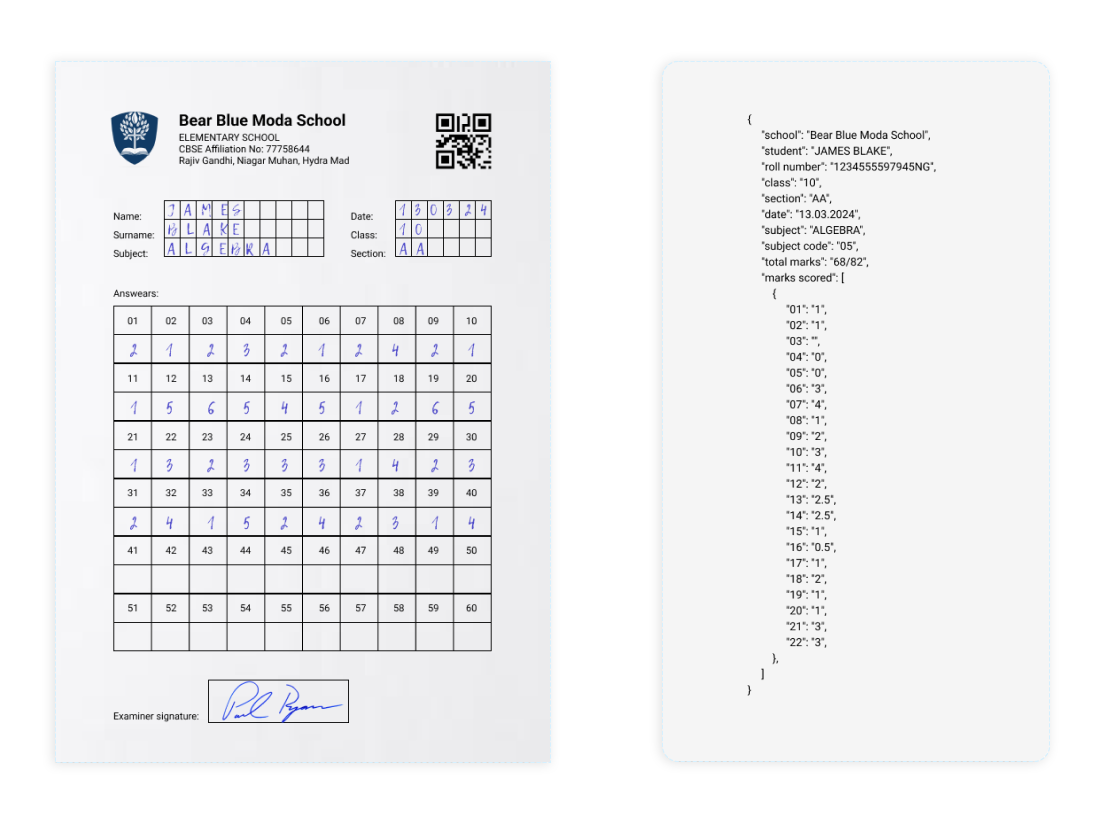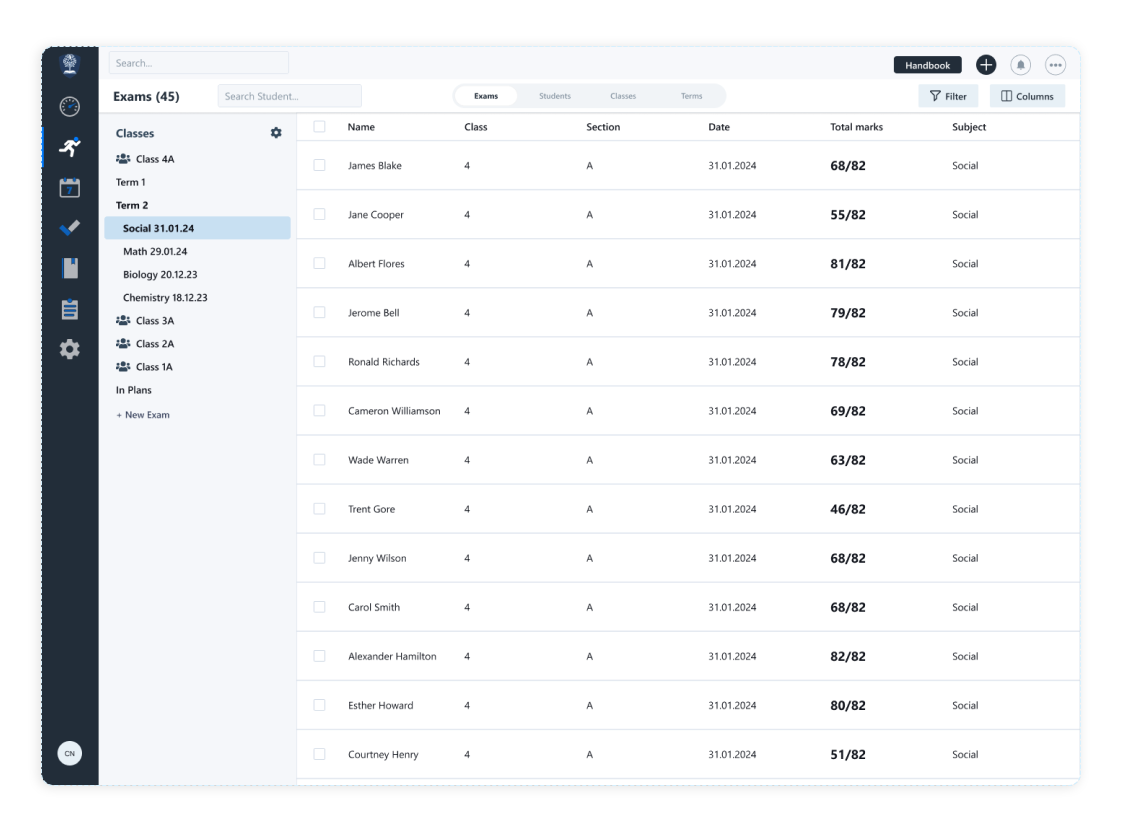Computer Vision Grade Tracking Service for Universities
Project Summary
An electronic service that fully automates the process of testing students in various disciplines: from generating answer sheets to analyzing them using computer vision. The service also highlights students' weak areas and suggests relevant educational materials to help them address knowledge gaps.
Services
Team
Target Audience
Challenge
Our customer is a university that is considering the implementation of an electronic service to automate the process of testing students in various disciplines. This service should store exam history and provide teachers with access to grades and their trends.
Since test answer sheets are filled out by students by hand and must be uploaded into the system as scans, we needed to address the challenge of storing a large number of scanned sheets.
Another challenge was to make the system scalable: once the system is tested and refined, this service will become a SaaS (Software as a Service) solution and will be offered as a service to other universities.
Solution
Development of Answer Sheets
To ensure our future computer vision (CV) model knows where to look for students' handwritten answers, we designed a test answer sheet. To generate these sheets, we utilized databases containing information about the university, students, and study groups.
Based on this data, we generated a QR code that links the answer sheet to a specific student in the database. In addition to the QR code, each sheet includes fields for the student's full name, group and stream number, subject, date, test answers and scores, and the examiner's signature.

Testing Students
At this stage, the teacher prints out the answer sheets generated by our system, distributes them to students for testing, collects them, and scans them.
Recognition of Answer Sheets and Populating the Grade Database
Storing scanned answer sheets for each student is not feasible due to the enormous data storage requirements. Therefore, the handwritten answer sheets are digitized using computer vision technologies.
Our system receives a large file containing sequentially scanned answer sheets. Using the QR codes, the system identifies each student's sheet and then proceeds to recognize the handwritten text.
The recognition process is the most challenging part of the project. Two factors helped us here: first, students write their answers in specific cells with fixed locations, and second, students are required to use block letters, which vary less than cursive handwriting despite differences in individual writing styles.
To train the CV model, we used a large dataset containing numerous examples of how different handwritten characters might appear.

Once the sheets are recognized and matched with the exam's reference answers, each student receives a grade, which is entered into the performance tracking system.
Both students and teachers have access to this system. However, while students can only view their own profiles, teachers can view the performance of all their groups and individual students.

Recommendation System
Since each student has a personal account in the performance tracking system, we integrated ChatGPT into the service. Based on our prompts, ChatGPT provides recommendations for improving academic performance.
ChatGPT knows the course curriculum and the content of each test. After analyzing the answers and correlating them with the course topics, it can offer students tailored recommendations to address knowledge gaps.
Results
Data for each student and each exam is stored in our electronic performance tracking service. Teachers can view various data slices: by student, by group, or by stream, through the service's interface.
Additionally, this service is used to prepare test answer sheets for new assessments and to provide recommendations for improving academic performance.
Once the system undergoes testing by the customer's teaching staff, the client plans to transform this service into a SaaS (Software as a Service) solution, offering it to other universities as a subscription-based service.